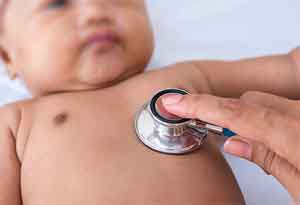- Home
- Editorial
- News
- Practice Guidelines
- Anesthesiology Guidelines
- Cancer Guidelines
- Cardiac Sciences Guidelines
- Critical Care Guidelines
- Dentistry Guidelines
- Dermatology Guidelines
- Diabetes and Endo Guidelines
- Diagnostics Guidelines
- ENT Guidelines
- Featured Practice Guidelines
- Gastroenterology Guidelines
- Geriatrics Guidelines
- Medicine Guidelines
- Nephrology Guidelines
- Neurosciences Guidelines
- Obs and Gynae Guidelines
- Ophthalmology Guidelines
- Orthopaedics Guidelines
- Paediatrics Guidelines
- Psychiatry Guidelines
- Pulmonology Guidelines
- Radiology Guidelines
- Surgery Guidelines
- Urology Guidelines
Five Endocrinology tests GP should order wisely in Children-American Academy of Pediatrics

The use of unnecessary tests and treatments contributes to healthcare waste. The “Choosing Wisely” campaign charges medical societies with identifying such items. The Choosing Wisely Top Five for tests in endocrinology that cannot be adequately justified on the basis of efficacy, safety, or cost. This initiative of American Academy of Pediatrics (AAP) serves as a starting point for quality improvement efforts to optimize both clinical outcomes and resource utilization in newborn care.
1. Avoid ordering LH and FSH and either estradiol or testosterone for children with pubic hair and/or body odor but no other signs of puberty.
Premature adrenarche is usually the diagnosis and does not involve activation of the pituitary-gonadal axis but is due to an early increase in adrenal androgens. DHEA-S levels are elevated for age but do not alter the management of this common and generally benign condition.
2. Avoid ordering screening tests looking for chronic illness or an endocrine cause, including CBC, CMP, IGF-1, thyroid tests, and celiac antibodies, in healthy children who are growing at or above the 3rd percentile for height with a normal growth rate (i.e., not crossing percentiles) and with appropriate weight gain.
Even in children who are below the 3rd percentile for height with a normal history and physical exam, the incidence of newly diagnosed pathology was found to be only about 1%. In patients who have significant short stature (e.g. ≤-2.5 SD) or who are well below their genetic potential based on parental heights, tiered or sequential screening may be considered.
3. Avoid ordering Vitamin D concentrations routinely in otherwise healthy children, including children who are overweight or obese.
Although a 25-hydroxyvitamin D concentration, reflecting both vitamin D synthesis and intake, is the correct screening lab to monitor for vitamin D deficiency, current evidence is not sufficient to suggest that screening in otherwise healthy including children who are overweight or obese is necessary or safe.
Global consensus recommendations caution against population-based screening for vitamin D deficiency (1). The US Preventive Services Task Force also has noted that variability of current assays and unclear cutoffs for deficiency may lead to “misclassification” of persons as having vitamin D deficiency, and that this misclassification “could outweigh any benefits if there are harms” (2). The American Academy of Pediatrics report on Optimizing Bone Health in Children and Adolescents advises screening for vitamin D deficiency only in patients with disorders associated with low bone mass such as rickets and/or a history of recurrent, low-trauma fractures (3).
It has been shown that children who are overweight or obese have a greater likelihood of having low vitamin D levels (4). If the history suggests an obese child has insufficient dietary intake of vitamin D (e.g., little milk intake), a vitamin D supplement should be recommended, which is more cost-effective than 25-hydroxyvitamin D measurements for both screening and monitoring therapy.
4. Avoid routinely measuring thyroid function and/or insulin levels in children with obesity.
TSH levels can be slightly elevated in obesity but this is more likely a consequence of obesity and rarely true hypothyroidism. Free T4 levels are usually normal and if so there is no proven benefit to treatment when TSH is minimally elevated. Testing thyroid function in otherwise healthy children should be considered only if stature and/or height velocity is decreased in relation to the stage of puberty.
There are significant limitations in the use of insulin levels as a marker of insulin resistance; furthermore, it is not necessary to order this test to establish a weight control management plan.
5. Avoid routinely ordering thyroid ultrasounds in children who have simple goiters or autoimmune thyroiditis.
Limit this study to children who have asymmetric thyroid enlargement, palpable nodules, or concerning cervical lymphadenopathy. Ultrasound can detect nodules that elude palpation, and one prospective series found that 31.5% of patients with Hashimoto’s thyroiditis will have thyroid nodules. The majority of these lesions, however, are not harmful. Overuse of ultrasonography results in needless health care costs and time expenditures for families. More importantly, insignificant findings can create anxiety within patients and parents who are fearful of thyroid cancer. In some cases, the abnormal findings will lead to additional radiographic studies, fine needle aspiration, or aggressive treatment of “pseudo-disease” that will not improve the health of patients.
There is a known association of thyroid cancer with Hashimoto’s thyroiditis, and a pathologic diagnosis of papillary carcinoma was made in 3% of patients in the study cited above. However, there is insufficient evidence to conclude that detecting nodules before they are palpable leads to better outcomes. It seems prudent, therefore, to perform a careful annual physical exam of the thyroid, as recommended for all children who are at are at increased risk of thyroid cancer. If that exam reveals asymmetry, palpable nodules or significant cervical adenopathy then ultrasonography is indicated [2].

Disclaimer: This site is primarily intended for healthcare professionals. Any content/information on this website does not replace the advice of medical and/or health professionals and should not be construed as medical/diagnostic advice/endorsement or prescription. Use of this site is subject to our terms of use, privacy policy, advertisement policy. © 2020 Minerva Medical Treatment Pvt Ltd